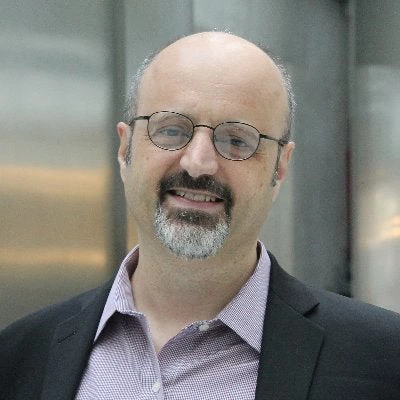As I was packing for a trip to the 2011 ABCDE on “Broadening Opportunities for Development” in Paris, I got a call from an old friend: Would I write a blog on how I saw the “impact” of the 2006 World Development Report, which was entitled “Equity and Development”, over the last five years? Since my friend was paying my ticket to Paris, I could not really refuse, but I did tell her that I had heard Esther Duflo was also going to the ABCDE, so I had better not pretend that one could assess the real “impact” of that report on the practice of development economics…
I am glad to reminisce, though! The World Development Report (WDR) 2006, which Michael Walton and I led under François Bourguignon’s guidance, was an attempt to bring issues of distribution back into the core of the development debate. Distribution was central to the concerns of early development economists, from W. A. Lewis and Simon Kuznets in the 1950s, to Ahluwalia and Chenery’s Redistribution with Growth (1974). After an interlude - marked by the onslaught of representative agent models in macroeconomics and by Margaret Thatcher and Ronald Reagan on the global stage – inequality made a tentative return to mainstream economics in the early 1990s. At that time, a number of authors suggested that today’s distribution of wealth (or income) might affect tomorrow’s growth and development prospects, via a myriad pathways: investment capacity, occupational choice, political economy, etc.
Development practitioners, however, were firmly focused on poverty reduction, and on economic growth as the main means for achieving it. Most saw inequality as an unhelpful distraction. Against that backdrop, the WDR 2006 sought to make two points: First, that people in developing countries, much as they really want to reduce poverty, also have other, broader social objectives. They care about development with fairness and social justice, and see tremendously uneven life chances as a gross violation of those principles. And second, that in a world of imperfect capital markets, and unattainable first-best policies, policies that redistribute opportunities may well be good for efficiency and growth as well. Equity-efficiency trade-offs, though widespread, are not universal, and much can be gained in practice by focusing efforts on “win-win” areas, such as early childhood development, conditional cash transfers, better teaching methods targeted to disadvantaged students, etc.
The report defined equity as the combination of equal opportunities – not equal outcomes –with minimum standards to avoid absolute deprivation in the outcome space. As Nancy Birdsall commented, we were moving poverty reduction from its leading role as the sole objective of development, to a supporting role as a constraint: Good development policy must seek to eliminate absolute deprivation, but it aims to go further, and to promote equal chances for a fulfilling and productive life for all.
None of this was path-breaking, of course. There are echoes of Sen everywhere, and we drew explicitly on the work of John Roemer and Dirk van de Gaer in conceptualizing equality of opportunity in economic terms. We were also fortunate to be part of an early wave of applied research on the empirical measurement of inequality of opportunity. In addition to work on various European countries, there are now published or forthcoming papers measuring inequality of opportunity in various Latin American countries, as well as Egypt, India, Turkey, and a group of African economies. Once you could write down some equations and put real numbers to a concept like “unequal opportunities”, (some) economists could admit that such a thing existed… Conferences were organized and working papers on the subject mushroomed.
The concept also appears to have gained some currency in the policy world. The (winning) campaign manifesto of Chile’s former President, Michelle Bachelet, centered on the concept of “growth with equity”, and contained many references to the importance of broadening opportunities. Her finance minister, Andres Velasco, once confessed to me that he had seen a copy of the WDR lying around somewhere in his office… How exciting that Andres, along with everyone mentioned in the previous paragraph, also appears to be on the ABCDE program next week… In Turkey, the government and the World Bank used equal opportunity measures and analysis as a way to promote the expansion of early childhood development initiatives.
Within the World Bank, the Poverty Reduction group in PREM has recently been renamed “Poverty Reduction and Equity” group. The poverty team in the Research Department has been renamed the “Poverty and Inequality” team. The LAC (Latin America & Caribbean) region’s new logo says “Opportunities for All”, and the region has done a lot of work on a Human Opportunity Index, which is often used by policymakers in the region. The UNDP has revised its hugely influential Human Development Index, to be more sensitive to inequality. In 2007, the Asian Development Bank published a report on Inequality in Asia, where the concept of inequality of opportunities also featured prominently.
None of these developments can be attributed to the WDR 2006. Most of these and other changes would almost certainly have taken place regardless. Yet, I think many of us who had the good fortune of working on that WDR team feel proud to have been a small part of a broader movement to re-introduce issues of distribution and social justice to the development policy debate. No sensible observer denies that economic growth is the central pillar of any long-term anti-poverty strategy. But it is equally true that any such strategy is likely to be better informed and ultimately more effective if distributional and equity aspects are not ignored. I am sure we will learn a great deal more about this at next week’s ABCDE conference.


Join the Conversation